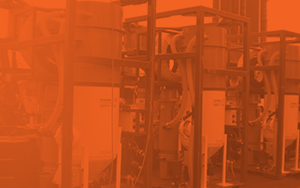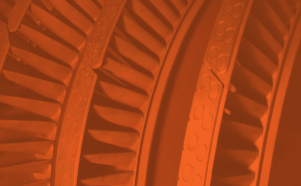Sponge-Jet boasts a wide range of composite abrasives used in a variety of industries and applications. Sponge Blasting is a dry process that typically falls under the abrasive blasting category. While many are familiar with our standard types of Sponge Media™, Sponge-Jet also offers some Sponge Media types with a designation of "DG" - within this article, we'll discuss what this means.
Some Sponge Media abrasives incorporate abrasive particles within our open-celled foam, capable of removing coatings and profiling surfaces. Alternatively, we also offer Sponge Media designed for delicate cleaning of surfaces such as plaster, marble, power generation turbines, and thin aluminum. The full spectrum of Sponge Media allows blasters to profile hardened steel as well as remove wax from bronze monuments without damaging the patina.
As prospective Sponge Blasters browse our Sponge Media offerings page, they'll find some Silver Sponge Media types have DG in the product name.
What is DG?
The DG after certain types of Sponge Media stands for “Double Grind.” This means that that blend of Media was run through the grinder more than once, creating a smaller total particle size. While the grit to sponge-foam ratio remain the same, the smaller particle size means more total surface area coming into contact with the substrate. This increased surface area creates faster production rates than first use Sponge Media.
For example, our most commonly used Sponge Media for industrial coating removal and surface preparation is Silver 30. This highly aggressive Sponge Media also comes in Silver 30DG allowing for potentially increased production possibilities that standard Silver 30 where a 2-5 mil (50-125 μ) profile is required.
One caveat to Double Grind Sponge Media is that its consumption rate is higher than standard Sponge Media. As mentioned above, the particle size of the sponge is smaller. As the media impacts the surface, the sponge breaks down. Because the particle is smaller, the breakdown happens faster. Therefore, it is often chosen on projects where increased production and blast speed is the most important factor.
DG Sponge Media is usually used on projects where there is a smaller window to do the blasting work, such as plant shutdowns, and critical path type projects. DG Sponge is sometimes mixed with new, standard sized Sponge Media to create what's called a "working mix." Working mix Sponge Media typically has faster production times than Sponge Media being used for the first time. If there is a limited window for blasting work, DG Sponge Media may be a solution.
Double Grind Sponge Media has also been chosen for projects that do not allow for the Sponge Media to be recycled. In applications where the Sponge Media cannot be recovered, recycled, and reused, a working mix is never created. DG Sponge Media allows for similar production rates throughout these projects.
Sponge-Jet also offers a product called CB 2.0. CB 2.0 is a lower cost Sponge Media that is ideal for removing mill scale, thin paint, and some environmental staining. CB 2.0 is different than our Silver Sponge Media line due to the type of grit embedded into the sponge foam. Silver Sponge Media contains aluminum oxide grit, while CB 2.0 has garnet embedded within it. CB 2.0 can created a 1-4 mil (25-100 μ) profile depending on blast pressure and nozzle type used. Similarly to DG Sponge Media, if an application has factors that will limit contractors' ability to recycle Sponge Media, CB 2.0 may be a solution.








